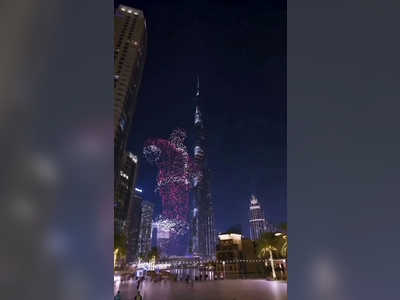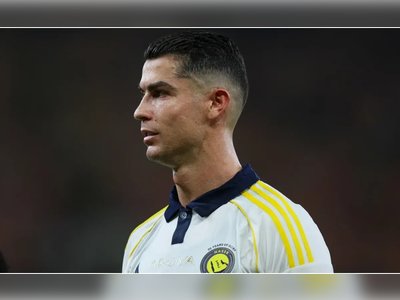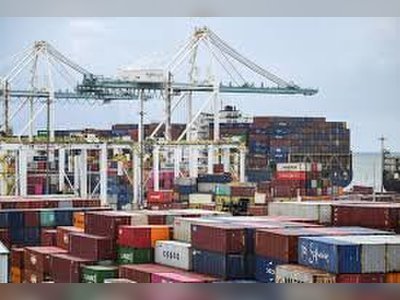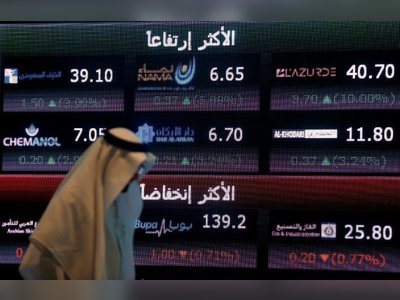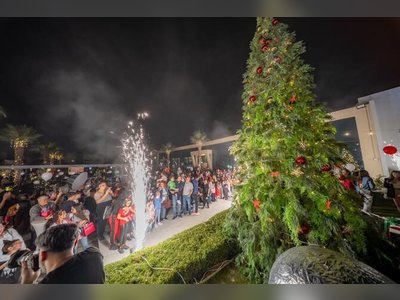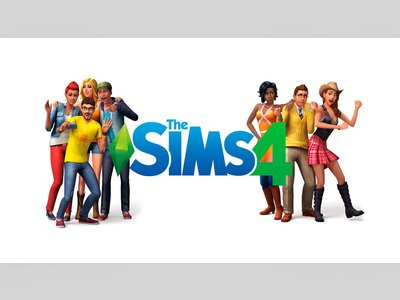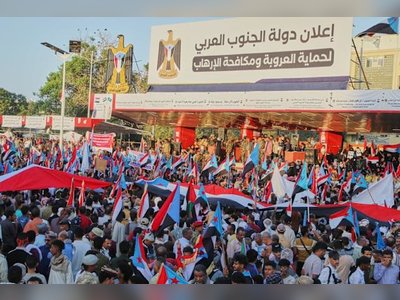
Muharram mourning rituals: Nakhlgardani in Shahroud
Nakhlgardani or palm-carrying ritual is the carrying of a huge wooden coffin and is a symbol of Muharram mourning in Iran. In the first decade of this month, the coffin, while covered with black and green cloth, is carried by numerous mourners due to its heavyweight. This structure is kept in Husseiniyehs (religious places) and mosques for the rest of the year.
Apart from Shahroud, the palm-turning ritual is performed in the cities of Yazd, Taft, Gonabad, Ferdows, Estahban, Zavareh, Kashan, and Taleqan. Of course, in these cities, the method of execution and the type of decoration, and the number of these symbolic coffins are different.
So that, one of the mourning methods of Muharram in Shahroud city is Nakhlgardani or palm-carrying ritual.
According to an ancient tradition, every year on the eleventh day of Muharram, the mourners of Imam Hussein carry the black symbolic coffin in front of the Pay-e Nakhl Mosque to the old cemetery of the city and return it to its original place after an hour of mourning.
Nakhl or symbolic coffin has 9 main poles that have been assigned to certain tribes and families since its construction, and during many years, people belonging to the same tribe or family are placed under their own bases when carrying Nakhl.
According to the trustees of the city, the servants of Tekiyeh (a kind of religious place) of Bazaar (another name for Bazaar Tekiyeh is Zanjiri), Tekiyeh of Bid-Abad, and Pay-e Nakhl Mosque are among the founders of this ceremony.
Every year, on the morning of the eleventh day of Muharram, the Nakhl body is covered in black by several servants of the Bazaar. For this purpose, a group of Sadat (those who are from the generation of Household of the Prophet of Islam), servants of Tekiyehs and Pay-e Nakhl Mosque went to the house of the late Kharrats family and after mentioning the tragedy about Imam Hussein and having breakfast, they handed over the cloths to cover Nakhl.
Dressing of the Nakhl in black is accompanied by the recitation of Salawat (which means peace be upon him) and the distribution of vows such as milk, syrup, fruit, etc. by other mourners.
Decorations such as swords, shields, etc. on the Nakhl body to make it more beautiful by the servants of Tekiyeh of Bid-Abad. Other Nakhl decorations include mirror frames, delicate nets, and green coverings.
The work of dressing the Nakhl lasted until around noon, and during the call to prayer, servants, residents of Bid-Abad neighborhood and other mourners gather for mourning and lunch in the Tekiyehs and mosques of the district.
In the afternoon, around 3:00 PM, the mourning crowd of the city will come to the Pay-e Nakhl place to hold this magnificent ceremony. One of the guest delegations in holding the Nakhlgardani ceremony is the mourners of Bagh-Zendan neighborhood. From the distant past, due to the weight and size of the Nakhl, the mourning committee of this neighborhood is invited to hold this ceremony every year.
After arriving in front of the Nakhl and greeting the symbolic coffin of the third Shiite Imam, the guest mourners enter the Bazaar and after a few minutes of mourning return to the Nakhl place.
It is worth mentioning that Bagh-Zendan neighborhood was a village in the past, which was later considered as one of its neighborhoods with the development of the city.
To pay their respects, two Nakhl sticks are always given to the mourners of the Bagh-Zendan district. Before moving the Nakhl, a small cradle attributed to Holiness or Hazrat Ali Asghar (AS), the six-month-old son of Imam Hussein, is installed inside the Nakhl and the needy people tie their fabrics in it with the intention of consecration.
A blessed cloth to the holy shrine of Imam Hussein (AS) is another pendant in the middle of the Nakhl. Putting apples on top of the swords attached to the Nakhl and placing a large metal bell in the middle of the Nakhl are other related tasks.
Because the mourners move the Nakhl when the bell rings. This is done by one of the old servants on top of the Nakhl.
With the presence of the mourning crowd around 4 pm, signs such as the flagpole, Hodah or palanquin and cradle of Hazrat Ali Asghar (AS), which are carried by religious delegations, are brought to the place where the Nakhl is placed and greet the Nakhl by lowering the head or blade of the flagpole.
Amari is a small tent similar to Hodah or palanquin of Holiness Zainab or the address of the wedding night room of Hazrat Qasim (AS). The flagpole is also carried as a sign of the flag of the owner of the flag of Karbala event.
Several Zul-Jannah (the name of the horse that Imam Hussein rode in Karbala) decorated with colorful cloths and shields are moved in front of or around the Nakhl.
With the presence of the mourners of Bagh-Zendan neighborhood delegations and the people belonging to the tribes of the founders of Nakhl under this sign of mourning, as well as the standing of two elders of Tekiyes Bazaar and Bid-Abad who are responsible for guiding the Nakhl from a height with a stick in their hands.
In a glorious moment, with the shout of Hussein and the ringing of the bell, the mourners lift the Nakhl and move in front of the Pay-e Nakhl Mosque towards the old cemetery of the city.
The distance between Pay-e Nakhl Mosque and the old cemetery of the city is about 300 meters, and the mourners of Nakhl will reach this destination in a few minutes.
After placing the Nakhl on the ground and placing the flagpole and other signs around it, the religious groups and delegations each mourn in front of the Nakhl for a few minutes, respectively.
At this time, lamentation about five members of the Prophet's Household (The five members of Al-Aba refer to the Prophet of Islam himself and his beloved daughter Holiness Fatima and his son-in-law Imam Ali and his grandchildren Imam Hassan and Imam Hussein) was recited by one of the eulogist or praisers of the Bagh-Zendan’s delegation, and all those present began to beat their chests.
It is worth mentioning that reciting this lament has a long history and is recited every year by one of the survivors of the late Haj Ebrahim Ameriyan on this day.
Singing the lamentations of five members of the Prophet's Household is a priority, followed by lamentation. In the meantime, the blessed cloths and apples at the top of the Nakhl swords are distributed among the attendees, and many wish for the healing of their patients at this time.
After reciting the lament and giving a speech by one of the preachers and an hour after the beginning of the ceremony, the Nakhl is moved among the shouts O Hussein mourners and returned to its original place. This ceremony often lasts until the moments before the sunset call for pray.
It is narrated that the lament of five people based on the hadith of Kisa and in connection with the five members of Al-Abba was arranged by a poet named Delkhoon and its performance by the late Haj Ebrahim Ameriyan has been common for some time during the palm-carrying ceremony on the eleventh day.
This poem is compiled in 26 verses and the mourners repeat the last hemistich of each verse.
It should be noted that the Bagh-Zendan neighborhood of Shahroud city also has its own Nakhl. The mourners of this neighborhood, with the participation of other mourners of Imam Hussein, carry the black-clad Nakhl to their neighborhood on the morning of Ashura day.
So that, one of the mourning methods of Muharram in Shahroud city is Nakhlgardani or palm-carrying ritual.
According to an ancient tradition, every year on the eleventh day of Muharram, the mourners of Imam Hussein carry the black symbolic coffin in front of the Pay-e Nakhl Mosque to the old cemetery of the city and return it to its original place after an hour of mourning.
Nakhl or symbolic coffin has 9 main poles that have been assigned to certain tribes and families since its construction, and during many years, people belonging to the same tribe or family are placed under their own bases when carrying Nakhl.
According to the trustees of the city, the servants of Tekiyeh (a kind of religious place) of Bazaar (another name for Bazaar Tekiyeh is Zanjiri), Tekiyeh of Bid-Abad, and Pay-e Nakhl Mosque are among the founders of this ceremony.
Every year, on the morning of the eleventh day of Muharram, the Nakhl body is covered in black by several servants of the Bazaar. For this purpose, a group of Sadat (those who are from the generation of Household of the Prophet of Islam), servants of Tekiyehs and Pay-e Nakhl Mosque went to the house of the late Kharrats family and after mentioning the tragedy about Imam Hussein and having breakfast, they handed over the cloths to cover Nakhl.
Dressing of the Nakhl in black is accompanied by the recitation of Salawat (which means peace be upon him) and the distribution of vows such as milk, syrup, fruit, etc. by other mourners.
Decorations such as swords, shields, etc. on the Nakhl body to make it more beautiful by the servants of Tekiyeh of Bid-Abad. Other Nakhl decorations include mirror frames, delicate nets, and green coverings.
The work of dressing the Nakhl lasted until around noon, and during the call to prayer, servants, residents of Bid-Abad neighborhood and other mourners gather for mourning and lunch in the Tekiyehs and mosques of the district.
In the afternoon, around 3:00 PM, the mourning crowd of the city will come to the Pay-e Nakhl place to hold this magnificent ceremony. One of the guest delegations in holding the Nakhlgardani ceremony is the mourners of Bagh-Zendan neighborhood. From the distant past, due to the weight and size of the Nakhl, the mourning committee of this neighborhood is invited to hold this ceremony every year.
After arriving in front of the Nakhl and greeting the symbolic coffin of the third Shiite Imam, the guest mourners enter the Bazaar and after a few minutes of mourning return to the Nakhl place.
It is worth mentioning that Bagh-Zendan neighborhood was a village in the past, which was later considered as one of its neighborhoods with the development of the city.
To pay their respects, two Nakhl sticks are always given to the mourners of the Bagh-Zendan district. Before moving the Nakhl, a small cradle attributed to Holiness or Hazrat Ali Asghar (AS), the six-month-old son of Imam Hussein, is installed inside the Nakhl and the needy people tie their fabrics in it with the intention of consecration.
A blessed cloth to the holy shrine of Imam Hussein (AS) is another pendant in the middle of the Nakhl. Putting apples on top of the swords attached to the Nakhl and placing a large metal bell in the middle of the Nakhl are other related tasks.
Because the mourners move the Nakhl when the bell rings. This is done by one of the old servants on top of the Nakhl.
With the presence of the mourning crowd around 4 pm, signs such as the flagpole, Hodah or palanquin and cradle of Hazrat Ali Asghar (AS), which are carried by religious delegations, are brought to the place where the Nakhl is placed and greet the Nakhl by lowering the head or blade of the flagpole.
Amari is a small tent similar to Hodah or palanquin of Holiness Zainab or the address of the wedding night room of Hazrat Qasim (AS). The flagpole is also carried as a sign of the flag of the owner of the flag of Karbala event.
Several Zul-Jannah (the name of the horse that Imam Hussein rode in Karbala) decorated with colorful cloths and shields are moved in front of or around the Nakhl.
With the presence of the mourners of Bagh-Zendan neighborhood delegations and the people belonging to the tribes of the founders of Nakhl under this sign of mourning, as well as the standing of two elders of Tekiyes Bazaar and Bid-Abad who are responsible for guiding the Nakhl from a height with a stick in their hands.
In a glorious moment, with the shout of Hussein and the ringing of the bell, the mourners lift the Nakhl and move in front of the Pay-e Nakhl Mosque towards the old cemetery of the city.
The distance between Pay-e Nakhl Mosque and the old cemetery of the city is about 300 meters, and the mourners of Nakhl will reach this destination in a few minutes.
After placing the Nakhl on the ground and placing the flagpole and other signs around it, the religious groups and delegations each mourn in front of the Nakhl for a few minutes, respectively.
At this time, lamentation about five members of the Prophet's Household (The five members of Al-Aba refer to the Prophet of Islam himself and his beloved daughter Holiness Fatima and his son-in-law Imam Ali and his grandchildren Imam Hassan and Imam Hussein) was recited by one of the eulogist or praisers of the Bagh-Zendan’s delegation, and all those present began to beat their chests.
It is worth mentioning that reciting this lament has a long history and is recited every year by one of the survivors of the late Haj Ebrahim Ameriyan on this day.
Singing the lamentations of five members of the Prophet's Household is a priority, followed by lamentation. In the meantime, the blessed cloths and apples at the top of the Nakhl swords are distributed among the attendees, and many wish for the healing of their patients at this time.
After reciting the lament and giving a speech by one of the preachers and an hour after the beginning of the ceremony, the Nakhl is moved among the shouts O Hussein mourners and returned to its original place. This ceremony often lasts until the moments before the sunset call for pray.
It is narrated that the lament of five people based on the hadith of Kisa and in connection with the five members of Al-Abba was arranged by a poet named Delkhoon and its performance by the late Haj Ebrahim Ameriyan has been common for some time during the palm-carrying ceremony on the eleventh day.
This poem is compiled in 26 verses and the mourners repeat the last hemistich of each verse.
It should be noted that the Bagh-Zendan neighborhood of Shahroud city also has its own Nakhl. The mourners of this neighborhood, with the participation of other mourners of Imam Hussein, carry the black-clad Nakhl to their neighborhood on the morning of Ashura day.

